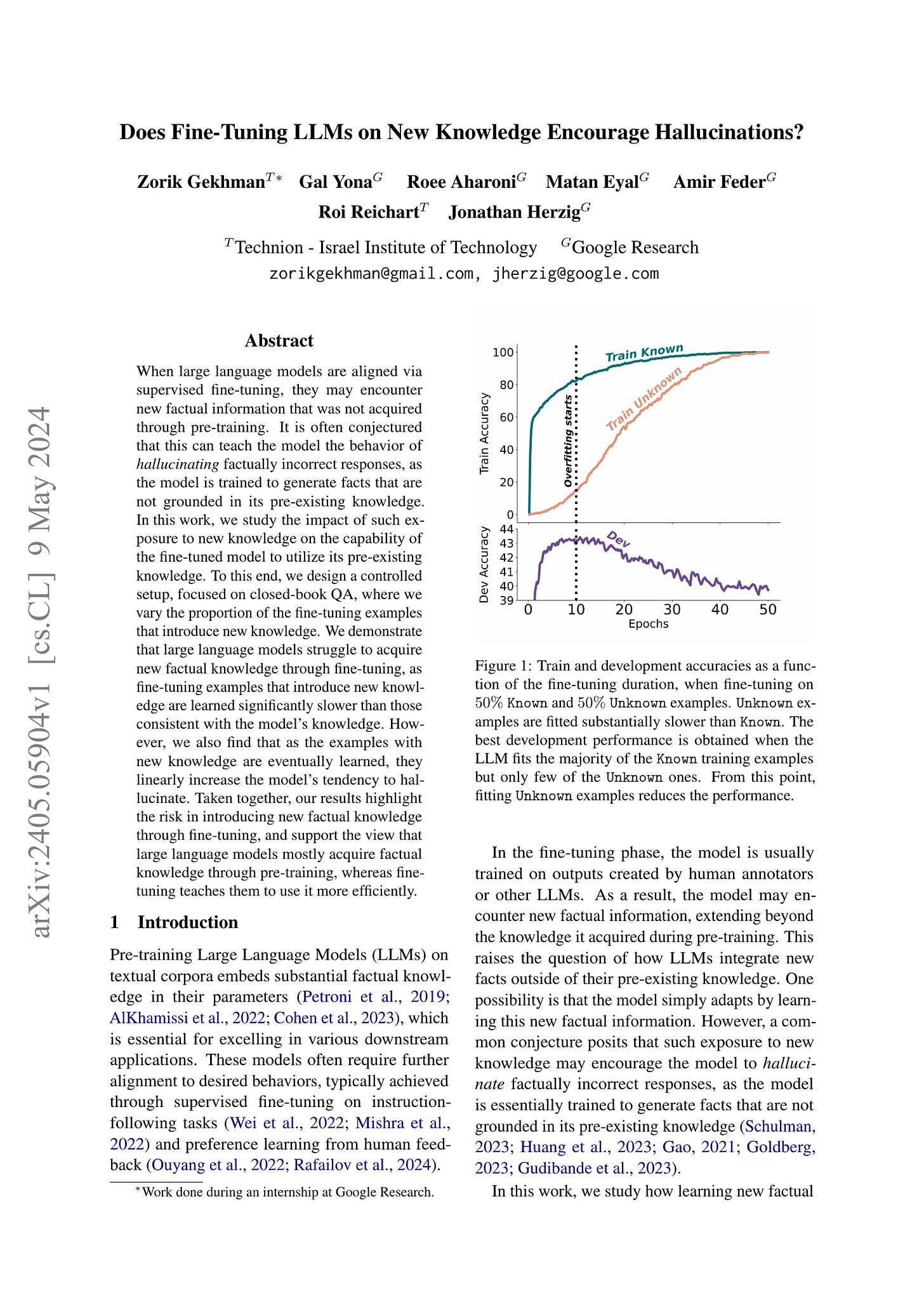2024년 5월 10일
Distilling Diffusion Models into Conditional GANs
(Minguk Kang, Richard Zhang, Connelly Barnes, Sylvain Paris, Suha Kwak, Jaesik Park, Eli Shechtman, Jun-Yan Zhu, Taesung Park)
We propose a method to distill a complex multistep diffusion model into a single-step conditional GAN student model, dramatically accelerating inference, while preserving image quality. Our approach interprets diffusion distillation as a paired image-to-image translation task, using noise-to-image pairs of the diffusion model's ODE trajectory. For efficient regression loss computation, we propose E-LatentLPIPS, a perceptual loss operating directly in diffusion model's latent space, utilizing an ensemble of augmentations. Furthermore, we adapt a diffusion model to construct a multi-scale discriminator with a text alignment loss to build an effective conditional GAN-based formulation. E-LatentLPIPS converges more efficiently than many existing distillation methods, even accounting for dataset construction costs. We demonstrate that our one-step generator outperforms cutting-edge one-step diffusion distillation models - DMD, SDXL-Turbo, and SDXL-Lightning - on the zero-shot COCO benchmark.
Diffusion 모델의 샘플을 사용해 노이즈와 이미지의 페어를 만들고 이걸 Img2Img로 생각해서 학습시켰군요. 이 문제에 대해 LPIPS 같은 Perceptual Metric이 효과적인데 Latent Diffusion이니 Latent에 대해 동작하는 Latent LPIPS에 GAN Discriminator를 사용했습니다. 재미있네요.
#diffusion #efficiency #distillation
Lumina-T2X: Transforming Text into Any Modality, Resolution, and Duration via Flow-based Large Diffusion Transformers
(Peng Gao, Le Zhuo, Ziyi Lin, Chris Liu, Junsong Chen, Ruoyi Du, Enze Xie, Xu Luo, Longtian Qiu, Yuhang Zhang, Chen Lin, Rongjie Huang, Shijie Geng, Renrui Zhang, Junlin Xi, Wenqi Shao, Zhengkai Jiang, Tianshuo Yang, Weicai Ye, He Tong, Jingwen He, Yu Qiao, Hongsheng Li)
Sora unveils the potential of scaling Diffusion Transformer for generating photorealistic images and videos at arbitrary resolutions, aspect ratios, and durations, yet it still lacks sufficient implementation details. In this technical report, we introduce the Lumina-T2X family - a series of Flow-based Large Diffusion Transformers (Flag-DiT) equipped with zero-initialized attention, as a unified framework designed to transform noise into images, videos, multi-view 3D objects, and audio clips conditioned on text instructions. By tokenizing the latent spatial-temporal space and incorporating learnable placeholders such as [nextline] and [nextframe] tokens, Lumina-T2X seamlessly unifies the representations of different modalities across various spatial-temporal resolutions. This unified approach enables training within a single framework for different modalities and allows for flexible generation of multimodal data at any resolution, aspect ratio, and length during inference. Advanced techniques like RoPE, RMSNorm, and flow matching enhance the stability, flexibility, and scalability of Flag-DiT, enabling models of Lumina-T2X to scale up to 7 billion parameters and extend the context window to 128K tokens. This is particularly beneficial for creating ultra-high-definition images with our Lumina-T2I model and long 720p videos with our Lumina-T2V model. Remarkably, Lumina-T2I, powered by a 5-billion-parameter Flag-DiT, requires only 35% of the training computational costs of a 600-million-parameter naive DiT. Our further comprehensive analysis underscores Lumina-T2X's preliminary capability in resolution extrapolation, high-resolution editing, generating consistent 3D views, and synthesizing videos with seamless transitions. We expect that the open-sourcing of Lumina-T2X will further foster creativity, transparency, and diversity in the generative AI community.
가변 해상도의 이미지, 비디오, 3D, 오디오 멀티모달 Diffusion 모델. 다양한 해상도와 모달리티에 대응하기 위해 Next Line 혹은 Next Frame 토큰을 끼워넣고 샘플을 1D 시퀀스로 바꿨군요.
#diffusion #multimodal #video-generation #audio-generation #3d-generation
Does Fine-Tuning LLMs on New Knowledge Encourage Hallucinations?
(Zorik Gekhman, Gal Yona, Roee Aharoni, Matan Eyal, Amir Feder, Roi Reichart, Jonathan Herzig)
When large language models are aligned via supervised fine-tuning, they may encounter new factual information that was not acquired through pre-training. It is often conjectured that this can teach the model the behavior of hallucinating factually incorrect responses, as the model is trained to generate facts that are not grounded in its pre-existing knowledge. In this work, we study the impact of such exposure to new knowledge on the capability of the fine-tuned model to utilize its pre-existing knowledge. To this end, we design a controlled setup, focused on closed-book QA, where we vary the proportion of the fine-tuning examples that introduce new knowledge. We demonstrate that large language models struggle to acquire new factual knowledge through fine-tuning, as fine-tuning examples that introduce new knowledge are learned significantly slower than those consistent with the model's knowledge. However, we also find that as the examples with new knowledge are eventually learned, they linearly increase the model's tendency to hallucinate. Taken together, our results highlight the risk in introducing new factual knowledge through fine-tuning, and support the view that large language models mostly acquire factual knowledge through pre-training, whereas fine-tuning teaches them to use it more efficiently.
LLM이 모르는 지식으로 파인튜닝을 하는 것이 할루시네이션을 유발하는가라는 문제에 대한 연구. 통제된 세팅에서 LLM이 아는 지식과 모르는 지식의 비율과 학습량을 바꿔가면서 테스트해봤네요.
요약하자면 모르는 지식에 대해서는 학습 속도가 느리고 학습을 하는 시점에서는 오버핏을 유발한다고 말하고 있습니다. 아는 지식에 대해서 학습이 빠르고 성능이 더 나은 특성을 보이네요.
새삼 Schulman이 SFT vs RLHF를 논하면서 굉장히 이른 시점에 중요한 문제에 대한 통찰을 제공한 것 같다 싶습니다.
#alignment #hallucination







